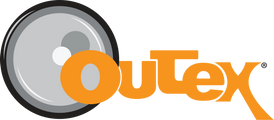Outex underwater photography Ambassador Alex Voyer's work featured on Netflix's Our Planet Documentary series
Apr 27, 2019
Over the last few years, Alex Voyer has made some of the most jaw-dropping images of Antarctica’s wildlife for Netflix's Our Planet. Here he shares his story of what it’s like to shoot underwater. Alex is also an Outex ambassador.
Alex Voyer's work featured on Netflix's Our Planet Documentary series.
As an underwater wildlife photographer, it has always been my life’s dream to find a pristine place, almost virgin from any human beings, full of animals, whales everywhere and far from any civilization. Fortunately, this place exists, and I’ve dreamed of it since my childhood: Antarctica.
Understandably, freediving and photographing wildlife in the waters of the coldest continent is not very easy. Getting there is the first hurdle to overcome. First, we traveled to Ushuaia and piled all of our gear in a small sailing boat, then we waited (and waited) for a good weather window to sail south.

Once the weather allowed, we sailed past the famous Cape Horn and crossed the infamous Drake Passage. After this adventure, we were at long last able to gear up to start diving; it was far from a tropical holiday though – I was diving in 0ºC water with just a 7mm wetsuit.

I’ve now been there three times to freedive and photograph wildlife. The first time I was there my good friend, photographer Fred Buyle, asked me if I wanted to join him for a trip because there was a free spot in the first freediving expedition to Antarctica on a sailing boat, the Lilledelle. Gilles Rigaud was heading that expedition.

Once we arrived I was able to jump straight into the freezing water and was soon surrounded by pods of humpback whales and hundreds of penguins flying under the water. My dreams started to become true. There were also the scary (but friendly) leopard seals coming quite close to say ‘Hi!’ and icebergs bigger than any building all over the place.
In Antarctica, everything was so huge that it was hard to wrap my head around it at times and it feels very complicated to explain. A year after my first expedition, I received a call from English film director Sophie Lanfear of Silverback films; she wanted to know how I was able to shoot gentoos penguins so close and in a way that nobody had before. My secret: freediving.

We discussed a lot about the wildlife freediving approach and my particular love for diving in cold waters. I was a photographer first and had never filmed before, but I was happy to offer my support where she needed it.
In normal underwater productions, directors generally use an expert rebreather diver (they have tanks). As a freediver and underwater photographer, I have different skills, which allows me to have a different approach to shooting underwater photography.
Although I’m limited to only one breath, we have don’t have the same bulky equipment that rebreather divers have. That means we can be ready very quickly if we see anything happening. This allowed for more flexibility when filming and I was able to quickly swim to the surface and follow any animals. Our freediving skills allowed us to be much more fluid underwater and got us many different interactions with the animals. We found they were much more curious about us. In my opinion, that made this episode stand out from other series.

All in all, it was an incredible experience and the episode has just premiered on Netflix. My work is featured in the Frozen Worlds episode.




